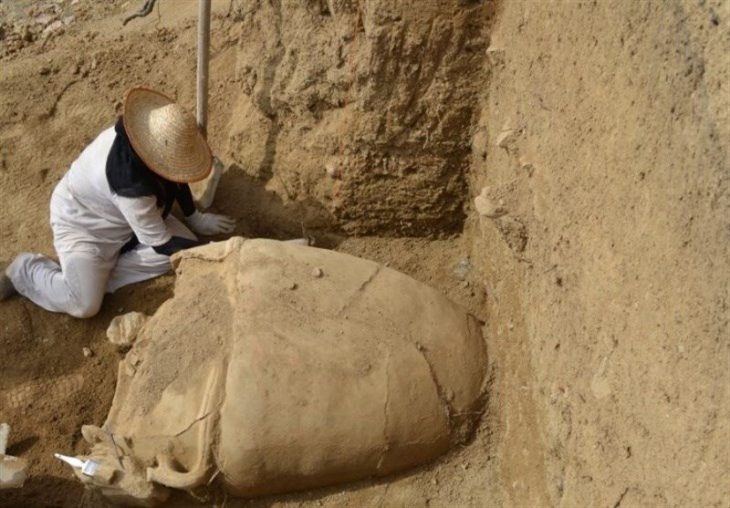In a serendipitous twist of fate amidst an oil drilling venture along the banks of the Karun River in Ahvaz, the capital city of Iran’s Khuzestan province, lies an extraordinary archaeological revelation—a vast ancient cemetery adorned with urn-like tombs. Unveiled unintentionally during the course of the drilling project, this necropolis offers a tantalizing glimpse into Iran’s rich historical tapestry.
Iranian archaeologist Hossein Feizi, in conversation with ILNA, divulged captivating details about this newfound burial ground. Nestled approximately 150 meters from the river’s edge, the cemetery boasts beige-colored urn tombs, distinguished by a veneer of natural tar—an intriguing testament to the ancient rituals and customs practiced by its inhabitants.
Feizi postulates that these distinctive vase tombs, oriented towards the river, likely align with the tenets of Mithraism, an ancient religion venerating Mithra, the Iranian sun deity. Rooted in pre-Zoroastrian Iran, Mithraism flourished as a creed of solar worship, embodying principles of justice, loyalty, and valor. The association of these urn tombs with Mithraic beliefs adds layers of complexity to the narrative, hinting at a profound spiritual significance embedded within the cemetery’s confines.
Tracing its origins to the Parthian Empire, spanning from 247 BC to 224 CE, the cemetery bears witness to a bygone era of cultural vibrancy and spiritual fervor. Feizi elucidates that while urn burials have a longstanding tradition dating back to the Neolithic era, their prevalence reached its zenith during the Parthian epoch—a poignant reflection of societal norms and practices prevalent at the time.
Drawing parallels with analogous discoveries in the Shoghab cemetery of Bushehr province, Feizi underscores the importance of comparative analysis in elucidating the broader cultural landscape of ancient Iran. The sprawling expanse of Shoghab cemetery, replete with diverse burial practices spanning millennia, serves as a poignant reminder of the region’s rich archaeological heritage.
However, amidst the excitement of unearthing this archaeological gem, concerns loom over its preservation and safeguarding. Cultural heritage activist Mojtaba Gahestuni voices apprehensions about the potential threat posed by the proximity of the site to industrial activities. Gahestuni’s impassioned plea for the diligent protection and preservation of this newfound treasure underscores the imperative of conservation efforts in safeguarding Iran’s cultural legacy for posterity.
As the dust settles on this remarkable discovery, the urn tombs of Ahvaz beckon archaeologists and enthusiasts alike on a journey of exploration and discovery, offering a tantalizing glimpse into the enigmatic past of ancient Iran.
